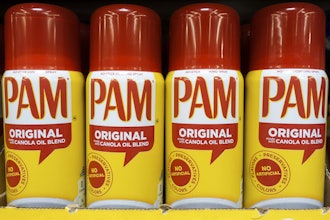The Software as a Service (SaaS) business model is creating demand from manufacturers looking to easily upgrade their IT capabilities and gain access to the latest business application functionality. With weak IT budgets more prevalent than ever, SaaS offers low-cost deployment and easy adoption of customer-centric technologies such as CRM automation.
While SaaS provides a fast and easy way to upgrade IT capabilities it remains, by its very nature, a one-size-fits-all solution, with little or no room for customization to fit the specific business processes in some manufacturing enterprises. If manufacturers want to create a more differentiated offering in today’s more challenging market conditions, there’s a good argument for sticking with custom software development.
Until now, this also presented some issues. Much of the software used for custom development is expensive, and is not designed to respond to rapidly changing markets or a highly dispersed workforce. These challenges are now fueling the emergence of a new breed of application platforms that offer some significant advantages over traditional on-premise software and systems.
Rich Internet Applications (RIAs), an essential ingredient and factor in the success of SaaS, have caught the interest of manufacturers looking to deliver information from a variety of systems and data sources across in-office, shop floor and mobile systems. In general, RIAs are more visual, work with a wider variety of computing devices and, in a business context, are capable of running core business processes. Manufacturers who have implemented custom RIA systems report benefits ranging from easier mobile access, to better data visualization and master item synchronization.
Five of the most important efficiencies delivered by RIA technology to manufacturers are:
1. Mobile Access to Information
A number of manufacturing systems can potentially benefit from mobile access. Obviously, CRM systems used by sales teams benefit from mobile device access, but shop floor and inventory systems are other common targets for mobile applications.
By using RIAs, plant managers and supervisors can access mission-critical information without being anchored to a static workstation. Mobile devices can help management more quickly identify and resolve problems on the shop floor, locate inventory and update information, in real-time and on-location. According to a recent industry survey commissioned by Motorola, mobility applications saved a daily average of 42 minutes per employee.
2. Better Data Visualization
Spatial information, such as the location of a part, is easier to understand when displayed graphically. Pictures, videos, animations and flow diagrams are typically much easier to process in real-time than rows of numbers and text.
Manufacturers who have implemented RIAs find users suggesting new and useful ways of visualizing data all the time. Data visualization improves decision making and can reduce product costs and direct material spend by identifying bottlenecks, anticipating shortages and improving lean manufacturing procedures.
3. Batch and Item Level Tracking
With RFID, barcode and other tracking systems, RIAs can provide instant visualization of work-in-process (WIP) and inventory information that’s important in managing manufacturing processes. Tracking of inventory, supplies, spare parts, and even labor resources using RFID enhances business efficiency. Use of RFID and custom applications to support batch and item level tracking in manufacturing processes can improve productivity for activities such as kitting efficiency by as much as 300 percent.
4. Integration Across Multiple Systems
Today's typical manufacturer has multiple systems and modules for inventory management, WIP, materials management, quality control and operator/machine interfaces. RIAs can pull data from multiple data warehouses and systems, and present information on a single screen or reduced number of screens with visualization capabilities, as well as to drill-down to necessary detail.
Integration and business process efficiencies can be obtained through improved partner/supplier collaboration, integrated customer service management, leaner supply chain management, enhanced information visibility between applications, better Product Lifecycle Management (PLM) and Enterprise Resource Planning (ERP) integration, optimized inventory management and more effective regulatory compliance.
5. Master Item Synchronization
Custom designed RIA applications accessing local data warehouses can be optimized for master item synchronization. With item synchronization across the supply chain, A.T. Kearney suggests that manufacturers can expect savings of $1.2 million per $1 billion in revenues from item synchronization alone.
Achieving Cost-Effective RIA Development and Deployment
Some manufacturers have been burnt in the process of developing and deploying RIA. Custom RIA development can be prohibitive to many manufacturers because the sophistication of the software requires two kinds of programmers: RIA programmers for the client-side user interface and traditional business logic programmers for the back-end server application. Maintaining two development teams is not cheap on budgets or fast on project deadlines, hence the attraction of SaaS.
However, this issue can now be resolved with newer approaches to RIA development that pre-compile and pre-configure hard code into ready-made business application engines or metadata engines. These platforms allow a single type of programmer to create and deploy the entire business application, from end to end, without the use of multiple programming languages and without multiple development teams. Metadata driven application platforms can reduce RIA development costs by 50-75 percent, making for a much faster time to market and break-even point.
If developing RIA in-house is the preferred path for manufacturers looking to create a competitive advantage in their business, then using the new breed of metadata-driven application platforms should be aggressively considered. In addition to enhancing the business’ proprietary advantage through the development of custom-made business processes, the superior user experience conveyed by RIA improves manufacturing productivity and gives management better insight into their overall business, so they can react faster to new opportunities as they arise.
Magic Software Americas is a provider of application platforms and business and process integration solutions. Find out more at www.magicsoftware.com






















